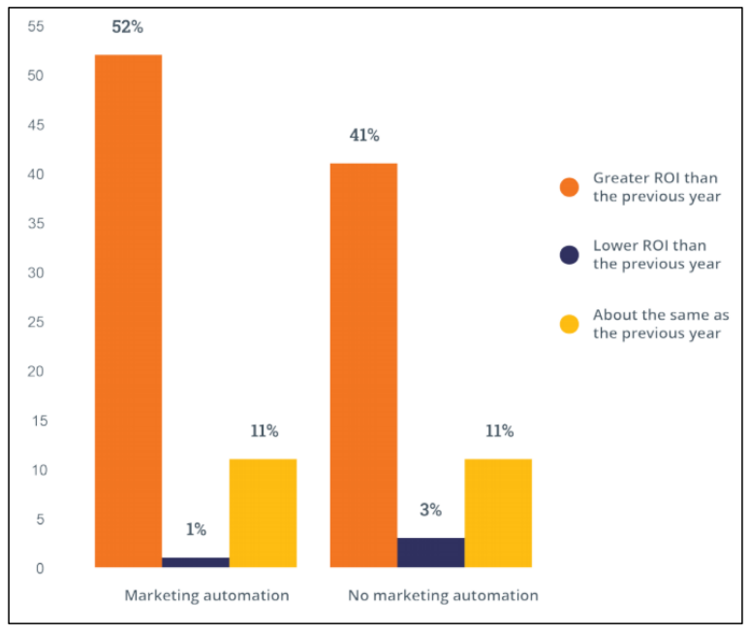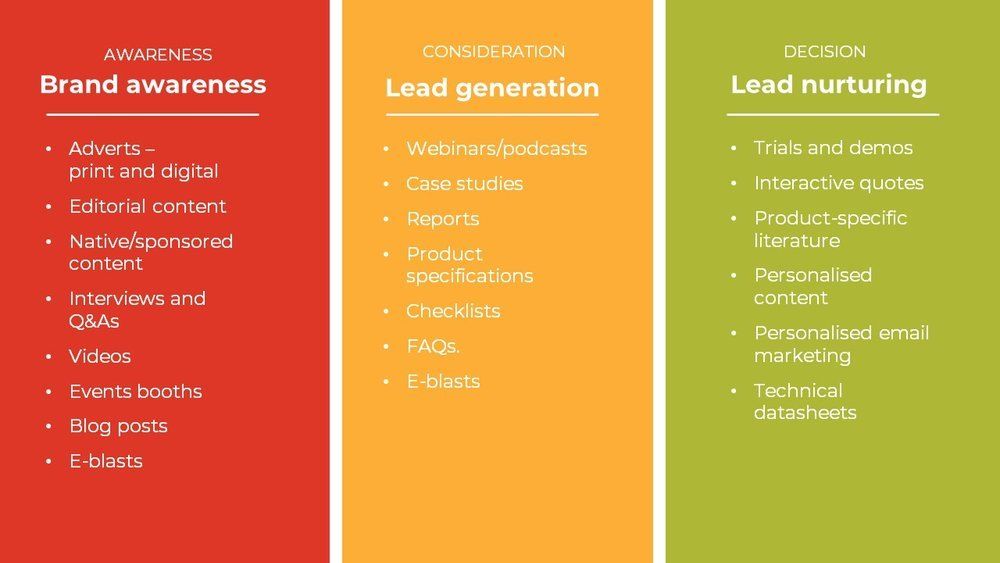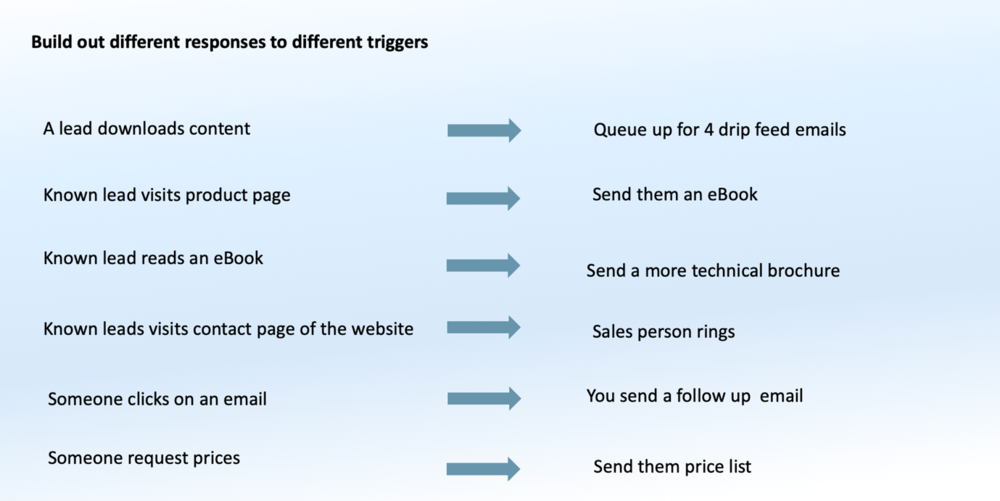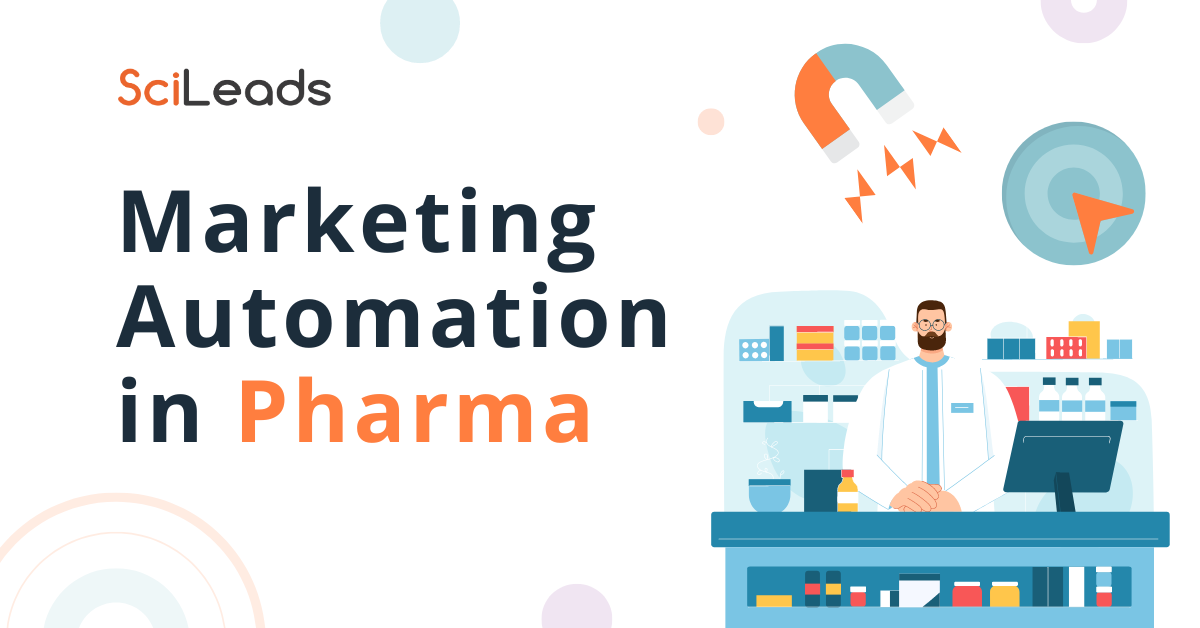If you’re adopting or thinking of adopting inbound as an approach to your pharma marketing, you’d be adopting a very smart and prudent marketing strategy.
For those of you who have either set off on the inbound journey or for those that have their bags packed and are about to set off, this post will look at marketing automation in pharma. It will look at what marketing automation is, why you should use it, and how to go about using automation to create first-class campaigns that nurture leads efficiently and successfully.
Of course, it’s not just the pharma industry that employs inbound marketing and automation tactics. Many industry sectors employ this highly effective technique to generate marketing ROI.
The pharma industry lends itself so well to inbound and marketing automation techniques. If you think about it, the pharma industry should never be short of content. Everything we do is about innovation and developing new cures; working on new solutions to create a better world. We are all about progress, evolution, and advancement, it’s all around us.
If we were in a different industry, banking or insurance for instance, there wouldn’t be many innovations pushing through – they are traditional sectors and tend to be more stagnant. In pharma, on the other hand, we’re all about developing the next cure so we have lots of content opportunities. We always have something to talk about.
What is Marketing Automation
Marketing automation usually refers to software platforms and technologies, or the automation of marketing tasks via that platform. A marketing automation platform allows marketers to scale lead management activities. In short, you can use the software to deliver marketing communication campaigns to individuals based on interaction criteria, at specific intervals, automatically.
Marketing automation is the natural partner of inbound marketing, the theory of which is simple: 1) Create good content regularly and often, 2) promote it, and 3) as strangers come to this content you feed them with more quality solution-based content. As they engage with you, they end up as qualified/warm sales leads who accept they have a problem, who generate an understanding that you have the solution and then want to engage with you about that solution.
Very simply, a new customer will come to you, this can be via several ways – they may have read a blog of yours or visit the website – and they are served a series of connecting follow-up actions that are automatically delivered through the marketing automation platform. The actions they receive will follow a specific workflow (a series of events programmed into the platform). So, if they visit a certain product page, they will receive a specific set of email follow-ups; if they look at the pricing page, they will receive different follow-up emails with different messaging.
Why Should I use it?
There are lots of reasons why you should use marketing automation software. Firstly, it will save you a huge amount of time manually checking and sending emails (as well as other tasks it can complete on your behalf). Secondly, and probably most importantly, is you can set these campaigns up to run so that the customers read the right follow-up messages, which will increase the likelihood that they will engage with you on a much more personal and more intimate nature. There are several marketing automation software providers on the market from HubSpot to Marketo, and from Pardot to SharpSpring, and they are all very powerful tools.
Using the software to automate the follow-up contact not only saves you time but gives you the ability to run an analysis on each prospect. Each time they engage with you (open an email, revisit the website, read another piece of content) their “lead score” increases (and can even decrease based on certain actions, if programmed in that way) allowing you to look at leads at each point of the buyer’s journey. This is critical for the modern-day pharma marketer. This ability to work with the sales team to identify the highest-scoring leads and action sales calls around how they have interacted with you are critical in building a strategic pipeline and better understanding what is best to do next with those leads.

Marketing automation software use by ROI.
How do I go About it?
As a pharma marketer, your marketing may be directed at different audiences. You may be marketing to a HCP audience or marketing OTC solutions direct to consumers. Or perhaps you are marketing to the R&D and lab managers in the big pharma organizations further down the supply chain. Whichever audience you are facing, the principle is quite straightforward.
Organize Your Content
First of all, you have to organize your content before thinking about setting up any automation process. You need to create content that is specifically designed to fit into one of three different parts of the buyer’s journey. So content for the awareness stage, content for the consideration stage and finally content for the decision stage (see the graph below to have a look at what kind of content types best fit each of these three stages).
You may need to make sure that you approach your content strategically and write the content as though existed within a chain or a sequence. So, there’s no use giving away all the information in your first piece of content (at the awareness stage). You need to keep some important information back that will be found in the second and third stages – where they are likely to be received more positively by your audience. When creating the content you should link them sequentially and they should naturally follow on, so the reader, when he finishes one piece of content, will want to go to the next.

Content examples for each buyer’s stage journey that forms the marketing automation process.
Select Touchpoints
You need to establish the many ways that a customer reaches you and build out specific actions (usually in the form of emails, as this is the primary channel that a marketing automation tool can handle). There are several different ‘touchpoints a customer may have with you. They might connect through a blog post or connect through a social media post or download some content , maybe they have visited the website. For each of these touchpoints, different workflows will need to be created.
For example, you need to have a different workflow for different pages of the website – someone visiting the ‘Our People’ page will want a very different type of follow-up action than someone visiting a Product or Service page.
Create Trigger-Based Messages
Once you have identified all the touchpoints, you need to build out specific email responses based on how they have interacted. In broad terms, we find that there are three types of emails: Relationship emails, content emails and offer emails.
Relationship-building emails are designed to improve relations and these emails might come in the form of surveys, welcome emails or simply in the form of a re-engagement email for a subscriber that has gone cold. The goal of the email might be to generate feedback to show that the subscriber is still willing to engage with your organization and the content that is sent to that subscriber. Content emails signpost visitors to content, usually new content, and the goal of the email might simply be to generate some awareness about your organization or its services or to provide some information regarding a topic. Offers emails are similar to the content emails but there is usually a transaction involved – most likely data in some form. The goal of such an email is to generate a lead from the subscriber list to then progress the subscriber through the buyer’s journey, potentially toward a sale.
Some examples of the relationships between actions and triggers, and the types of messages that can be sent, are below.

Different email marketing actions based on specific triggers that drive the automation process.
Measure, Measure, Measure
Once you have built the workflows – identifying the appropriate content pieces to be promoted at each buyer’s journey stage and programmed the marketing automation platform to understand these stages via triggers – and released the content with the leads coming in, it’s imperative that you use the marketing automation software to analyse and measure.
Use the dashboard to look at numbers rising through the “lead score.” If 20 leads are over the 100 score mark in month two, set targets to push that number north in months three and four.
Also, use the software to look at each lead and to map the ‘life of the lead’ with the sales team. You can track each lead from the moment they first came to, from when they engaged from that very first tweet! Ensure you sit with the sales team and look at this together – this is essential information for the sales team to have for their follow-ups. Closed-loop marketing with automation is hugely important – use this.

Lead scoring for pharma leads, within marketing automation platform, SharpSpring.
Marketing Automation in Pharma
Inbound is where the smart money is going in pharma marketing. It’s indirect (meaning it’s not overwhelming) and it’s sustainable (meaning it can be used over and over). Whichever automation system you use – follow the steps above, spend time setting up the workflows and think about the specific touchpoints for your target audience. Spend time analyzing the leads with the sales team. Do all this and you will have a successful, long-term marketing strategy that brings real results.
Next Steps
This blog was originally written by Gareth Pickering for his company Orientation Marketing, which is one of SciLeads’ esteemed partners. For more on marketing automation and inbound in the pharmaceutical sectors, and how they can help you, see their section on inbound marketing here.
If you would like to see life science lead generation in action, get set up with a free demo of SciLeads.


